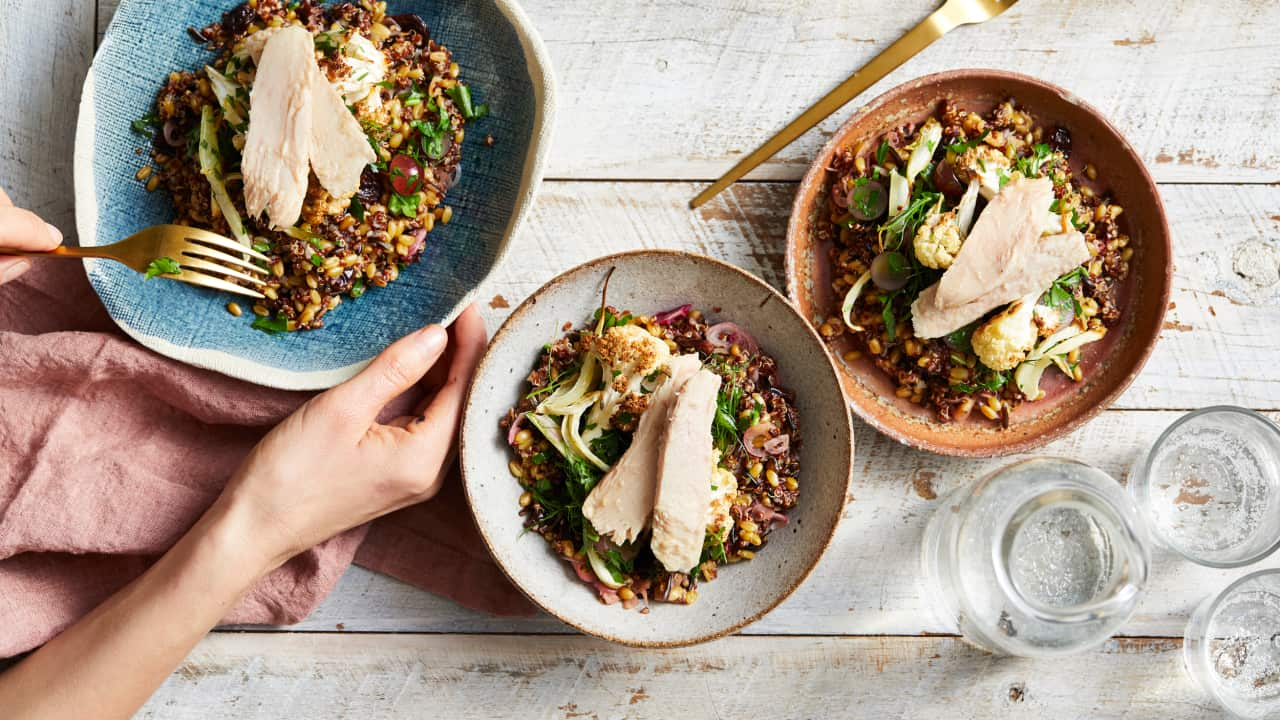Carbohydrates have a bad reputation. Tagged as the sworn enemy of carb-free and low-carb dieters, many Australians fear that they will gain weight if they eat a diet regularly featuring bread, pasta, rice and oats.
But dietitians, Alex Parker and Anna Debenham from the nutrition consultancy organisation , say this fear is partially unwarranted.
“Not all carbohydrates are the same,” says Parker. “'Carbohydrates' is a big umbrella group that covers a lot of different foods.
“For example, quinoa and chocolate cake are both carbohydrates. Quinoa is a whole grain and it will help you to feel fuller for longer while chocolate cake is a refined food that is obviously not good for weight loss."
Other foods which included refined grains are white rice, white bread, some processed crackers, some refined breakfast cereals, pearl barley and pearl couscous.
For example, quinoa and chocolate cake are both carbohydrates. Quinoa is a whole grain and it will help you to feel fuller for longer while chocolate cake is a refined food that is obviously not good for weight loss.
“You just don’t get the same nutrients from refined grains as you do from whole grains. We should always aim to eat grains whole.”
Common whole grain foods are whole grain bread, quinoa, oats, brown rice, and whole grain crackers, pasta, couscous and flour. "A whole grain includes the entire seed, where the grain is intact," says Debenham. "A whole grain contains three essential parts: the outer layer of the grain, which is rich in vitamins, minerals, fibre and phytonutrients; the endosperm, which is the really starchy, carbohydrate and protein-rich layer of the grain, and the germ layer which has B vitamins and minerals.”
Debenham adds that whole grains actually have a low glycaemic index (GI) “and low-GI foods are wonderful for weight management”.
“Whole grain consumption is linked to weight loss and weight management because it contains nutrients like fibre that make you feel full, that are also good for your gut health.”
Why should we eat whole grains?
There are a lot more benefits to including whole grains into your diet than just weight management. “Evidence suggests that people who eat whole grains regularly are less likely to have conditions like type 2 diabetes and suffer from bowel cancer,” Parker says.
“There is now also a lot of research [coming to light] showing that if we cut whole grain from our diet, we reduce the diversity of the healthy bacteria in our gut and this is not what we want to happen.”
recommends that Australians consume 48 grams of whole grains a day to reap the related health benefits to protect against chronic disease.
Evidence suggests that people who eat whole grains regularly are less likely to have conditions like heart disease, type 2 diabetes and suffer from bowel cancer.
However, GLNC’s triennial study into Australians consumption and attitudes towards grains and legumes found 60 per cent of us choose refined grains over whole, with the average whole grain intake sitting at 21g per day. That’s less than half the recommended intake.
Meanwhile, conducted by the National Food Institute at the Technical University of Denmark, shows that the Danes eat around 63 grams of whole grain a day.
In Denmark, the daily recommendation is actually 75 grams of whole grains a day. Around 43 per cent of all children and 27 per cent of all adults in Denmark meet their national daily recommended intake recommended - that’s obviously a lot greater than what most Australians are eating.
The GLNC suggest that the recommended daily intake of whole grains is higher than Australia’s because average consumption is a lot higher.
Whole grain foods feature heavily in a traditional Nordic diet, which is rich in foods like rye bread, oats, and barley, as well as plenty of fruit, vegetables, and legumes, plus oily fish and small amounts of dairy foods and meat.
How do we increase our whole grain intake?
"Don’t be put off by having to eat more whole grains," says Parker. "It’s really achievable to hit the recommended target and consume 48 grams of whole grains a day."
"You can incorporate small serving sizes of whole grains into every meal of the day. Have about a quarter of a cup of oats in the morning and snack on Vita-Weats or unsalted, unbuttered popcorn during the day, as needed. For lunch, you can have one slice of whole grain bread and at dinner, you can have half a cup of brown rice or wholemeal pasta."
Parker also encourages Australians to consider the food swaps below to increase their whole grain intake.
1. Try wholemeal/whole grain bread in place of white bread.
2. Look out for whole grain breakfast cereals, or warm up with porridge oats.
3. Swap your usual white rice for brown, black, even red rice.
4. Did you know pasta, couscous, and noodles are all available in wholemeal varieties?
5. Try a new grain: quinoa, freekeh, buckwheat, amaranth, and teff are all available in the supermarket.







